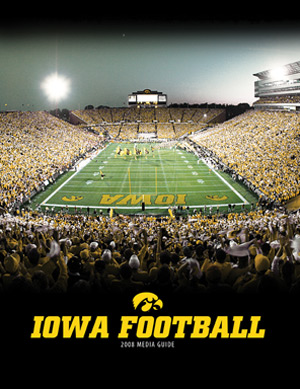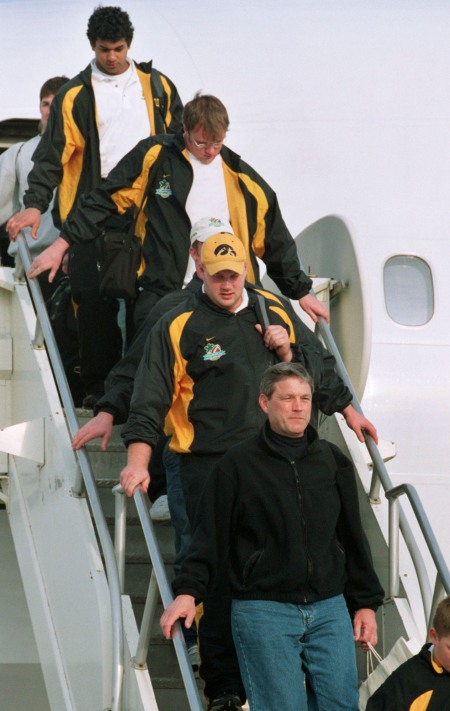
Workers from an Iowa City tree service clear trees from the northwest side of Carver-Hawkeye Arena on Thursday, July 23, 2009. The work is done to complete a utility project necessary to begin a the renovation of Carver-Hawkeye Arena. (Scott Dochterman/The Gazette)
Utility crews have begun preparatory work on the invisible guts of Carver-Hawkeye Arena’s future renovation.
The $2 million utility project has wiped out half the parking west of Carver-Hawkeye Arena, which senior associate athletics director Jane Meyer promises will be available in time for football season. The project includes water and electrical work, and a local tree service was clearing timber northwest of the arena.
“We have to get a 12-inch water line from Hawkins Drive down around sort of the footprint of where the practice facility will be,” Meyer said. “This was bid as a separate project.
“The utilities have to be out of the way before anything else begins.”
The state Board of Regents approved the $47 million renovation in June 2008. Athletics officials planned to break ground this fall, but Meyer said it’s too early to commit to a timeline because the drawings are not finalized. Iowa City’s Neumann Monson Architects and Kansas City-based HNTB are the project architects.
“I’m not even going to speak to that (a timeline) until we know where this last pricing comes in and we make sure everything is in order,” Meyer said.
Earlier this week Athletics Director Gary Barta said the utility project will lead to Carver’s renovation.
“The actual Carver project hasn’t gone to bid yet,” he said. “It’s a precursor. It’s a utility project that will allow us to do the big renovation once we go to bid sometime this fall.”
Athletics officials have received around $9 million in pledges and commitments for the project as of earlier this summer. They hope to raise $20 million privately. Associate athletics director Mark Jennings said Thursday the fundraising campaign is ahead of schedule.
The basketball facility/arena renovation includes a multi-court gym for the basketball and volleyball teams and a renovated wrestling complex. Each sport will receive new locker rooms, new coaches offices and an 8,000-square foot strength and conditioning center.
The arena renovation plan includes two hospitality rooms and 650 premium seats for men’s basketball. A courtside seat for men’s basketball is valued at $125,000 in giving over five years. A second-row seat costs $60,000 over five years. There will be 50 seats in each row. The arena also includes 550 premium club seats costing $12,500 per seat over five years.



 Posted by scottdo
Posted by scottdo  IOWA CITY — The University of Iowa has not decided whether or not to eliminate team media guides for the upcoming 2009-2010 sports season.
IOWA CITY — The University of Iowa has not decided whether or not to eliminate team media guides for the upcoming 2009-2010 sports season.



